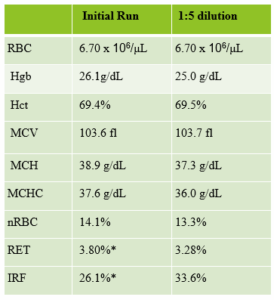If formaldehyde is so dangerous, then why is it still used in the laboratory today? It is so dangerous, in fact, that the United States Occupational Safety and Hazard Administration (OSHA) has a standard for the chemical, OSHA Formaldehyde standard (29 CFR 1910.1048). However, despite its dangers, formalin is still the best product available with the most tolerable risk for the needs we have in the lab.
Anatomic pathology has faced the great challenge of tissue preservation for hundreds of years. Decomposition, degradation from microbiological contamination, and even optimal hydration have hindered the proper isolation and study of tissue and organs. Early fixatives such as picric acid, osmium tetroxide, and even mercuric chloride were excellent at preserving the samples, but these compounds are extremely toxic and/or volatile. It wasn’t until 1893 when a German physician named Ferdinand Blum discovered the benefits of formaldehyde. Blum concluded that immersion of tissues in a 4% solution of formaldehyde, the 10% neutral buffered formalin widely used today, provided excellent preservation with a much lower risk to the user.
How dangerous is formalin? Keeping formalin off your skin and out of your eyes is crucial since it is a tissue fixative. An even greater risk of working with formalin comes from its respiratory hazards. Formalin off-gases quickly, creating a very dangerous, and unseen hazard. When inhaled, formalin can cause difficulty breathing, coughing, and wheezing. In addition, long-term exposure can cause respiratory issues, skin irritation, and an increased risk of nasopharyngeal cancer, formaldehyde is a known carcinogen.
Baseline exposure monitoring is required by OSHA to demonstrate that employees are not overexposed while working with and around formalin. Badge readings that fall below the time weighted average (TWA) of 0.75 ppm over an eight-hour period or below the short-term exposure limit (SEL) of 2 ppm over a 15-minute period, prove that the lab is a safe environment and additional badge monitoring is not required. However, if the readings exceed the limits, or if changes to the lab or processes are made, subsequent badge monitoring should be performed.
How can the lab control for exposures to the chemical? The best practice is to limit the time staff work with open containers of formalin. Of course, this is not always possible. Therefore, respirators, chemical fume hoods (CFH), grossing hoods, and room ventilation may be necessary. Keeping equipment in good running condition helps to minimize exposure. Therefore, grossing hoods and the CFH should be certified annually, and staff should undergo fit testing for respirators each year as well.
When it comes to hazardous waste, laboratories have several options for removing formalin from the premises. Anatomic pathology labs are required to dispose of both solid and liquid waste, two separate waste streams. Solids can go out as regulated medical waste with proper labeling, but what the liquid waste must be handled differently. Labs can either neutralize the waste onsite or contract with a vendor to have it removed. Organizations can neutralize formalin waste on-site for disposal in their normal sewage system. This does mean, however, that labs need to monitor their neutralization process which includes pH and aldehyde testing of the waste prior to pouring down the drain. It is always recommended to confirm this process with local wastewater treatment centers to ensure the proper steps are being taken prior to disposing of the waste.
Unbuffered formalin can break down quickly, but buffered formalin has a limited shelf life. Therefore, limiting the quantity on hand in the lab not only helps with product quality, it also keeps staff safer. Another good lab practice is to limit the height at which formalin is stored. As with all corrosive chemicals in the department, formalin should be stored below shoulder height. Do you store your formalin in a flammable cabinet? Formaldehyde, the active ingredient in formalin, is a flammable gas. However, only solutions with higher concentrations of formaldehyde are actually listed as flammable. A container of 37% formaldehyde is considered flammable, but 10% NBF is stable under normal conditions and classified as non-flammable.
Chemical spills happen, so departments need to be ready to respond to such an event. A formalin spill in the lab or the operating room cab be dangerous to staff and patients. Knowing how to handle the spill can be the difference between a safe response or an event that causes staff and/or patients harm. As stated, formalin gives off a gas, so placing an absorbent mat or a towel on a spill will only increase the surface area that can generate harmful gases. Therefore, having a neutralizing product available for spills and training staff to use the product is essential. Staff that run through spill drills frequently know the location and contents of their spill kits and respond more effectively. Working with formalin is dangerous, but the more staff know about the product and respect it, the safer their work practices become. Using and keeping formalin in the lab requires some planning and training. The lab is a dynamic environment, so workspaces and procedures should be reviewed often. Train staff on formalin safety and help them to always work safely with formalin.

-Jason P. Nagy, PhD, MLS(ASCP)CM is a Lab Safety Coordinator for Sentara Healthcare, a hospital system with laboratories throughout Virginia and North Carolina. He is an experienced Technical Specialist with a background in biotechnology, molecular biology, clinical labs, and most recently, a focus in laboratory safety.



